What We Did (and Ate) in One Day in Parma, Italy
Planning to spend one day in Parma, Italy? This charming city in Emilia-Romagna is easily accessible. It’s about an hour from Bologna and two from Milan, making it a great option for a day trip.
Parma is known for its iconic food, including Parmigiano Reggiano and Prosciutto di Parma. You’ll see them on menus across Italy, but nothing compares to tasting them here. We even noticed a clear difference between the prosciutto served in this region and what we had elsewhere.
But Parma is more than just food. Its historic center is filled with beautiful architecture, lively piazzas, and walkable streets. It’s a university town with a local, lived-in feel that we really enjoyed.
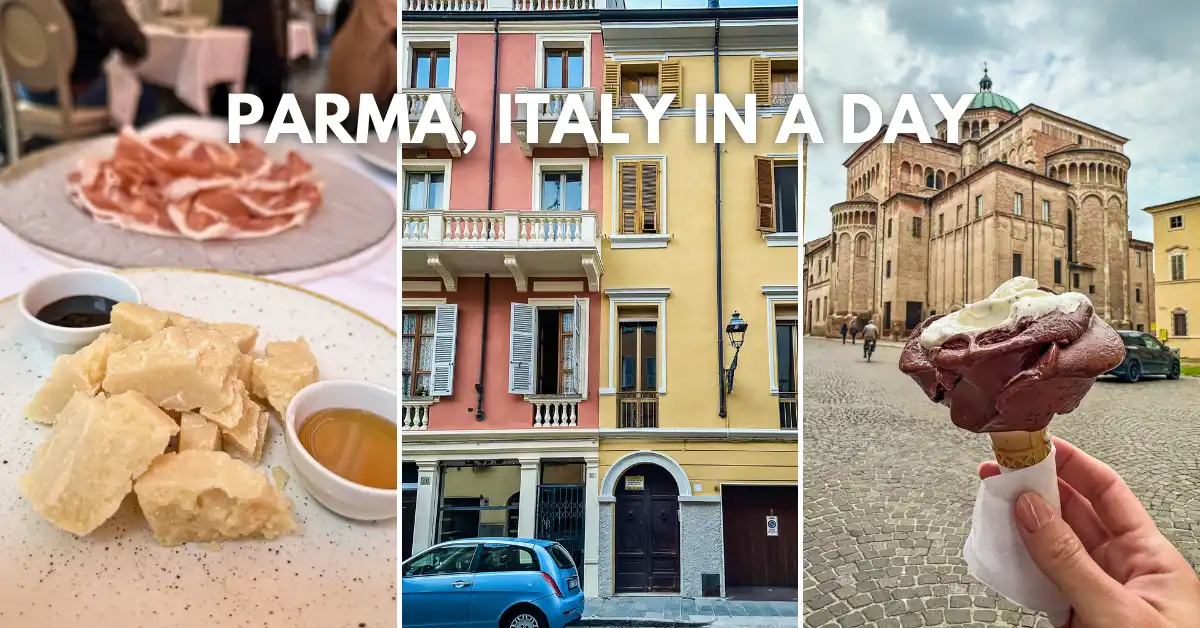
Disclaimer: This post may contain affiliate links, meaning we earn a commission at no extra cost. Please refer to our full disclosure for details.
We debated visiting a Parmigiano Reggiano factory but decided to spend the day exploring the city instead, and we’re glad we did. In this post, we’re sharing exactly what we did (and ate) during our one day in Parma, along with tips if you’re planning a day trip of your own.
This itinerary is based on our day in Parma in 2022. While the experience reflects our visit, I’ve updated this post to keep the information helpful for planning your own trip.
One Day in Parma, Italy
What can you see in just one day in Parma? Here’s the itinerary we followed during our visit.
If you’re planning a day trip, try to visit when everything is open. Some museums close on Sundays or Mondays, so it’s worth double-checking hours ahead of time to make the most of your day.
Start Your Day at Piazza Duomo
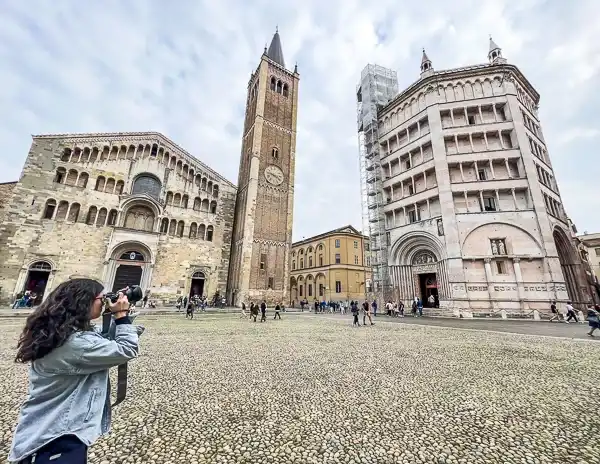
Piazza Duomo is the heart of historic Parma, a quiet but powerful introduction to the city’s beauty and history. Here, you’ll find two of Parma’s most important landmarks side by side: the Duomo di Parma and the Battistero di Parma. It’s the perfect place to start your day, with centuries of art, architecture, and local life all coming together in one square.
Duomo di Parma (Cattedrale di Parma)
Step inside the Duomo di Parma and you’ll find one of the city’s true masterpieces.
Construction began in 1059 under Bishop Arnoldo, but the cathedral wasn’t completed until centuries later, after an earthquake destroyed the original structure. Today, it stands as a prime example of Romanesque architecture, with a few Gothic elements added over time.
The cathedral has two distinct facades — the Romanesque front from the 11th century and the Gothic-style bell tower built in the 14th century. Inside, the artwork is breathtaking. Take a seat and admire the intricate details, especially the stunning frescoes.
Don’t forget a few euro coins. You’ll need them to light up Correggio’s famous dome fresco, The Assumption of the Virgin Mary, which the cathedral is dedicated to.
The Duomo is closed daily from 12 PM to 3 PM.
Battistero di Parma
Next to the cathedral, you’ll find the Battistero di Parma, an octagonal building made from pink Verona marble. Construction started in 1196, and inside, you’ll find three levels filled with colorful frescoes, carvings, and artwork that tell biblical stories.
The Baptistery is stunning inside. From the detailed sculptures to the paintings that cover the walls and ceilings, there’s so much history and artistry to take in. It’s worth setting aside some time to walk around and really look closely at everything.
Tickets are sold at the Diocesan Museum entrance, located just across Piazza Duomo at Vicolo del Vescovado 3/a. Admission includes entry to both the Baptistery and the museum.
The Baptistery is open daily from 10 AM to 6 PM.
Eat Parmigiano Reggiano and Prosciutto di Parma
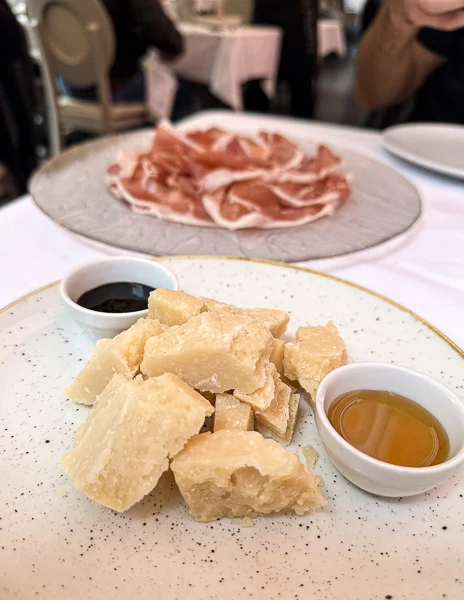
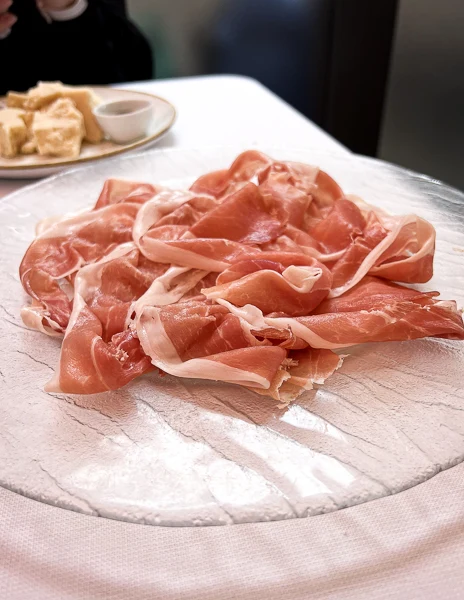
You can’t visit Parma without trying its two most famous specialties: Parmigiano Reggiano and Prosciutto di Parma. Order them at lunch, grab a snack, or stop into a local salumeria — just make sure you taste them fresh while you’re here.
During our food tours around Emilia-Romagna, we sampled Parmigiano Reggiano DOP at different ages. Still, when we ordered a plate of Parmigiano Reggiano and Prosciutto di Parma at La Forchetta, it was on a completely different level. Fresh, rich, and nothing like what you find at home.
If you have time, visit a salumeria in the city center. Salumeria Garibaldi came highly recommended to us, but it happened to be closed the day we were there.
Parmigiano Reggiano is sold in whole wheels, wedges, and pre-cut portions. Prosciutto di Parma is available sliced fresh or by the leg. If you plan to bring some home, make sure it’s vacuum-packed and packed in your checked luggage.
Tour Ideas:
Private Half-Day Parma Food Walking Tour [book here]
Wander Through Parma’s Historic Center
Parma’s historic center is beautiful and easy to explore on foot. We recommend wandering without a set plan. It is the best way to experience the colorful streets, quiet squares, and local landmarks that give Parma its relaxed charm.
As we walked around, we were surprised by how vibrant the city felt, with rows of pastel-colored buildings and hidden corners around almost every turn. You’ll come across more cathedrals, peaceful piazzas, and plenty of places to stop for a quick espresso or gelato.
One of our favorite ways to explore Parma was simply letting the streets lead us. It is the kind of city that invites you to slow down and enjoy whatever you find, especially on a nice afternoon.
Treat Yourself to Gelato at Gelateria K2
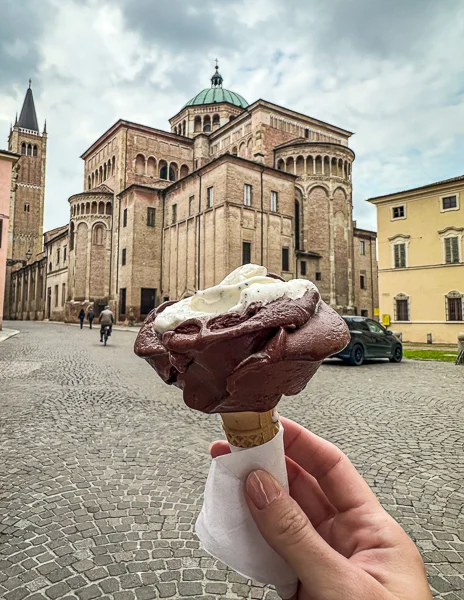
Gelateria K2 is just behind the Baptistery, near the Church of San Giovanni Evangelista. We had heard they serve some of the best gelato in Parma, and it didn’t disappoint. The shop uses local and seasonal ingredients to make its gelato fresh every day.
The gelato was delicious, and they even shaped it like a flower, which was a fun and unexpected touch.
Foodie Tip: How to Tell if Gelato is Fresh and Homemade
Fresh, homemade gelato is usually kept flat in rectangular containers or covered with metal lids. If you see gelato piled high into colorful mountains, it is likely factory-made. Shops that stack their gelato this way also run the risk of serving spoiled gelato, since the portions at the top are not rotated out as often.
Step Inside the Chamber of St. Paul
The Chamber of St. Paul (Camera di San Paolo) was one of the most interesting finds during our walk through Parma. It’s a small gem that’s easy to miss if you’re not looking for it, but well worth a stop if you appreciate history and art.
For a small entrance fee, you can take a quick self-guided tour through four rooms. As soon as you walk in, you are greeted by a copy of The Last Supper painted by Alessandro Araldi, which sets the tone for what is inside.
During your visit, you will also see Saint Catherine’s Cell, another small room decorated with earlier frescoes by Araldi. It is a nice introduction before stepping into the Chamber of St. Paul, where Correggio’s masterpiece covers the ceiling.
The real highlight is the Chamber itself, one of Parma’s most important historical treasures, painted by Antonio da Correggio in 1519. The artwork covers the vaulted ceiling with intricate frescoes and is considered one of Correggio’s earliest masterpieces from the Italian Renaissance.
It doesn’t take long to visit, but it leaves a lasting impression.
Did You Know? Leonardo da Vinci’s The Last Supper is located in Milan, inside the Church of Santa Maria delle Grazie, a UNESCO World Heritage Site.
A Quick Stop at the Giordano Ferrari Puppet Museum
Tucked next to the Chamber of St. Paul, inside Castello dei Burattini, is one of Parma’s more unexpected finds: the Giordano Ferrari Museum.
Giordano Ferrari was a world-renowned Italian marionette maker, and the museum celebrates his family’s long tradition of puppetry. It started with his father, Italo Ferrari, who staged puppet shows with his wife. Giordano joined the performances when he was just nine years old, giving voice to the characters and eventually creating his own puppets and style. His work helped shape the history of Italian puppetry, and some of his handcrafted pieces are still on display here.
The museum is small, free to visit, and easy to explore in about 15 minutes. Even if you are not usually into puppets, it is a fun and memorable stop that adds something a little different to your day in Parma.
Step Inside Parma’s Palazzo della Pilotta
One of the top things we had planned for our one day in Parma was visiting Teatro Farnese, located inside Palazzo della Pilotta.
This incredible theater, dating back to 1618, was one of the first indoor theaters in the world. It is also one of the best-preserved examples of Baroque theater design, created by Giovan Battista Aleotti, one of the leading architects of the time.
Unfortunately, it was closed on the day we visited. Still, we highly recommend adding it to your itinerary. You could easily spend a couple of hours exploring Palazzo della Pilotta if you have the time.
Palazzo della Pilotta is home to several important sites, and your entry ticket includes access to:
- Teatro Farnes
- Galleria Nazionale di Parma (The National Art Museum)
- Biblioteca Palatina (historic library)
- Archaeological Museum
Spend Some Time at Parco Ducale
While exploring Parma, a visit to Parco Ducale is a great way to slow down and enjoy a quieter side of the city. It is one of the closest parks to the historic center, just across Ponte Verdi from Palazzo della Pilotta.
After crossing the bridge, you will spot the Palazzo Ducale, also known as Palazzo del Giardino, to your right. When we visited, local children were playing baseball outside the palace, bringing a lively energy to the peaceful setting.
Parco Ducale is a large, tree-filled park where locals come to walk, relax, and enjoy the day. During our October visit, autumn was at its peak. The leaves had turned golden, chestnuts covered the ground, and the whole park felt like it belonged in a postcard. \\
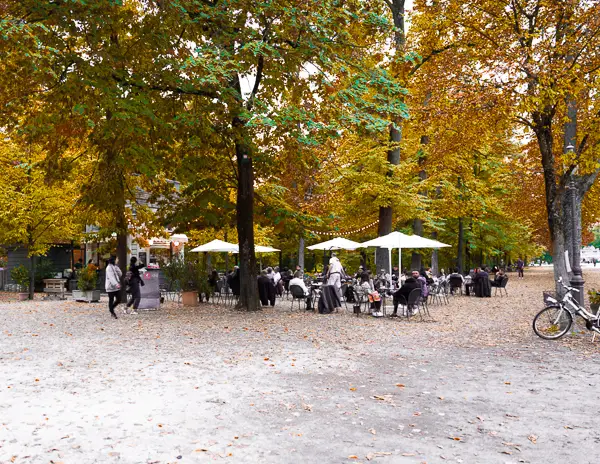
Later in the afternoon, we stopped at daMAT Chiosco, a small bar tucked into the center of the park. We ordered sparkling water and espresso while locals around us sipped Aperol Spritzes, chatting and unwinding during aperitivo hour. It was a nice way to relax and enjoy the atmosphere before moving on.
Top 5 Foods to Eat in Parma
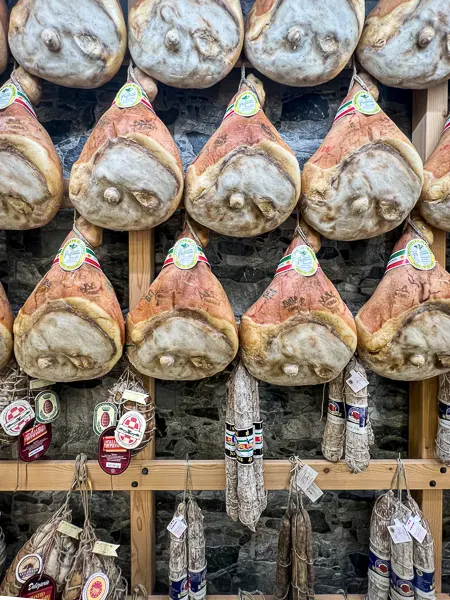
Parma is known for some of the most iconic foods in Italy, and many of them are DOP-protected, meaning they can only be produced here. These are the must-try local specialties:
Read more: Exploring the Food of Emilia-Romagna
Where to Eat in Parma, Italy
If you’re spending just one day in Parma, finding the right places to eat can feel overwhelming. We had sit-down meals for both lunch and dinner, and are happy to share two spots we highly recommend: Ristorante La Forchetta and Ristorante Gallo d’Oro. Both offered standout meals.
Ristorante La Forchetta
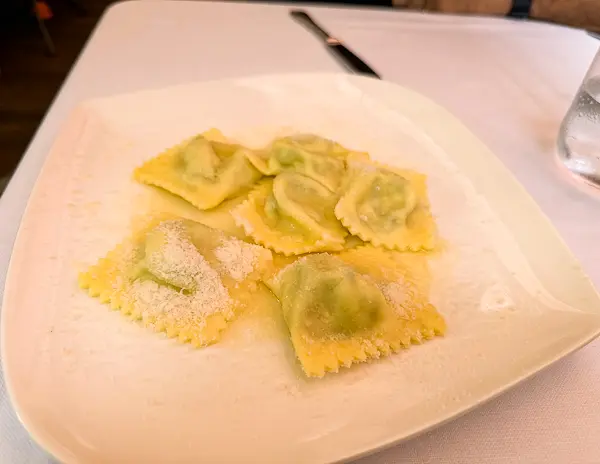
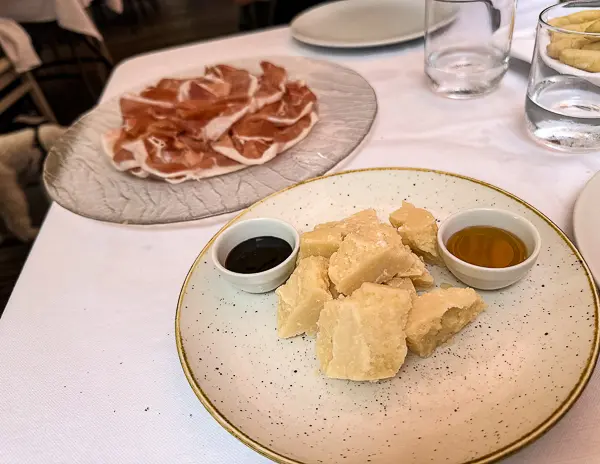
La Forchetta is located in the center of Parma, just a short distance from Piazza Grande. The restaurant offers seating both indoors and outdoors. We stopped in for lunch without a reservation and were lucky to get a table outside, but they were full, so if you can, make a reservation ahead of time.
We started with a plate of 36-month aged Parmigiano Reggiano and Prosciutto di Parma — because there was no way we were visiting Parma without enjoying both.
For our main dishes, we had Tortelli di Zucca and Tortelli d’Erbetta, and they were some of the best filled pastas we’ve ever had. The ingredients tasted fresh, the seasoning was just right, and nothing was overdone. Each plate was simply dressed with butter and Parmigiano, letting the flavors speak for themselves.
Ristorante Gallo d’Oro
We found Gallo d’Oro through Lonely Planet and booked a same-day reservation on The Fork. It turned out to be one of our favorite meals in Emilia-Romagna. It left such an impression that we still talk about it. Hubby calls it one of his top food memories from the trip.
We even recommended it to a group we met on a food tour in Modena. When we ran into them again in Bologna (completely unplanned), they couldn’t stop thanking us. They were just as impressed.
The menu is divided into two parts: one with classic regional dishes and the other with gourmet takes using local ingredients. We were drawn to the gourmet side. The poached egg with potatoes, parmesan foam, and truffle was a standout. Hubby wiped the plate clean and followed it with ravioli stuffed with Parmigiano Reggiano and topped with truffles.
For dessert, get the Sbrisolona con Mousse allo Zabaione. Our waiter highly recommended it and did not disappoint. The sweet zabaglione cream topped with crumbly local cookies was the perfect finish.
Before you leave, head downstairs to see where the original restaurant began. It’s a small detail that adds to the charm.
Tip: Download The Fork app before your trip to Italy. It’s their version of OpenTable or Resy. While not every restaurant is listed, it’s a helpful tool for finding same-day reservations or booking in advance. We used it more than once to find great places to eat during our trip.
BEFORE YOU TRAVEL TO ITALY, CHECK OUT THESE RELATED READS:
Kathy Ava
Meet Kathy Ava, a food, travel, and cruise writer based in Los Angeles/Pasadena, and the owner and main writer of Tasty Itinerary. With over 20 years of experience planning trips and logistics at her full-time job and for herself, she's become a pro at crafting unforgettable tasty itineraries. She's always on the hunt for delicious, fun travel destinations and cruise itineraries. She firmly believes that life is short and we must make the most of it, so always say yes to dessert.

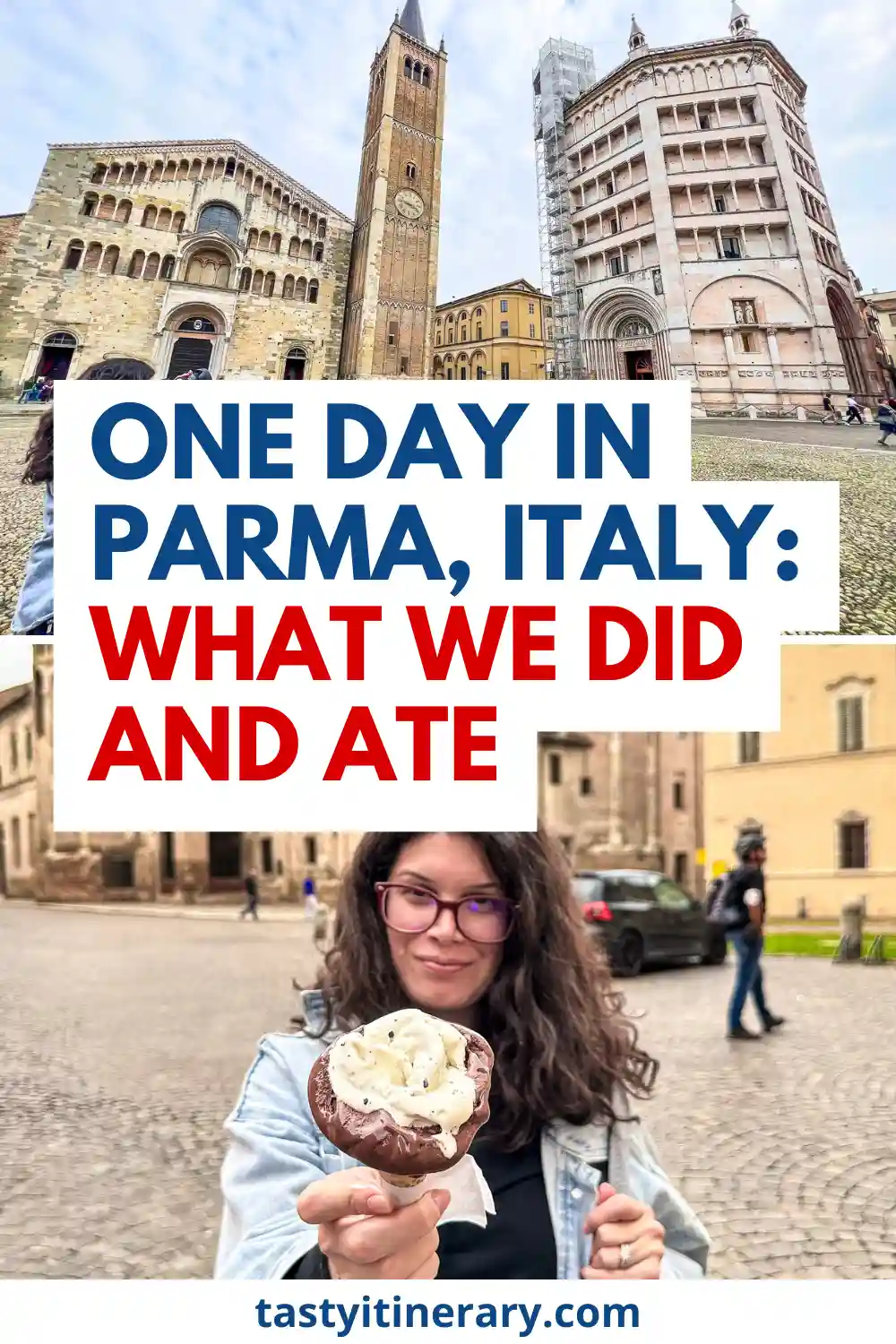
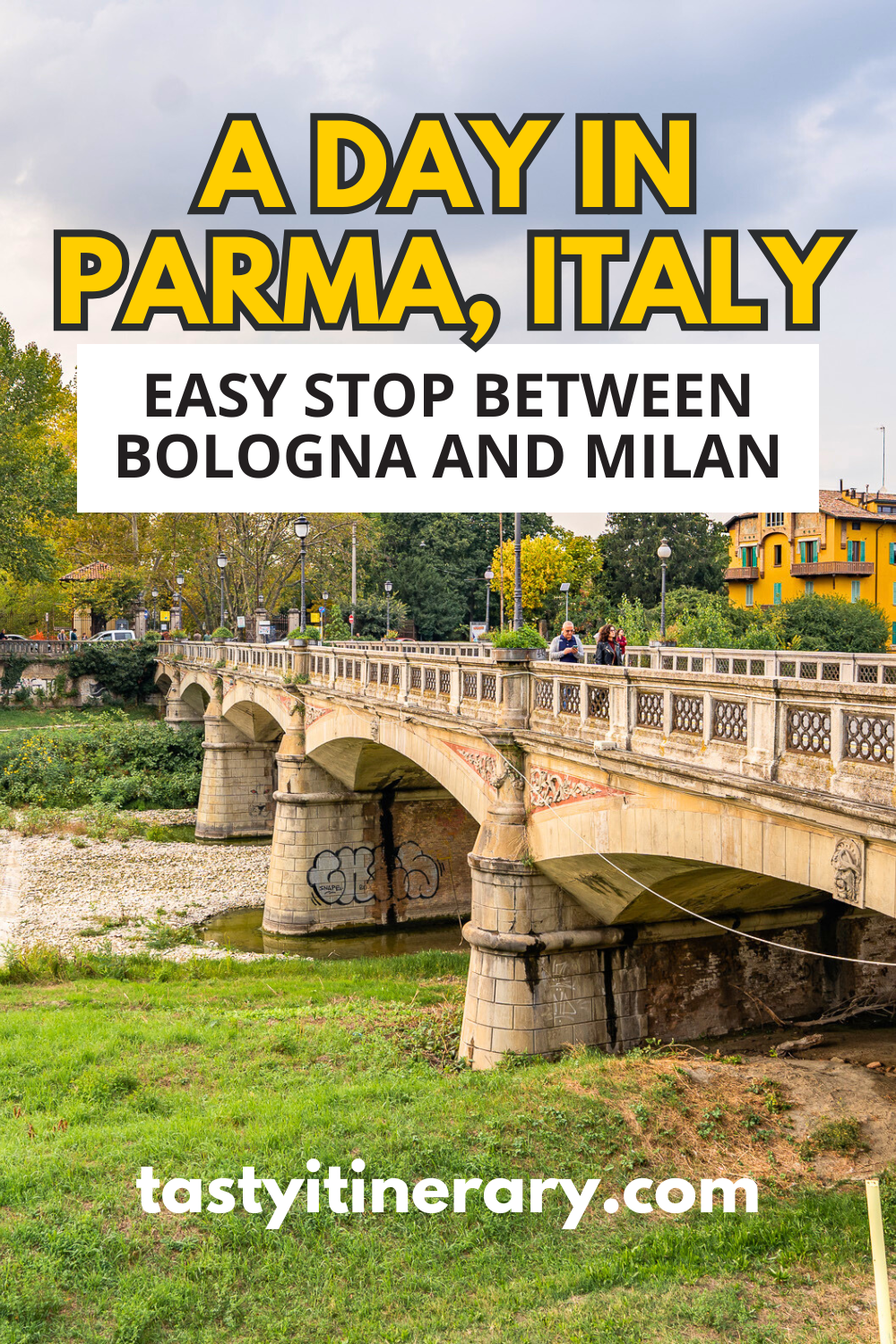
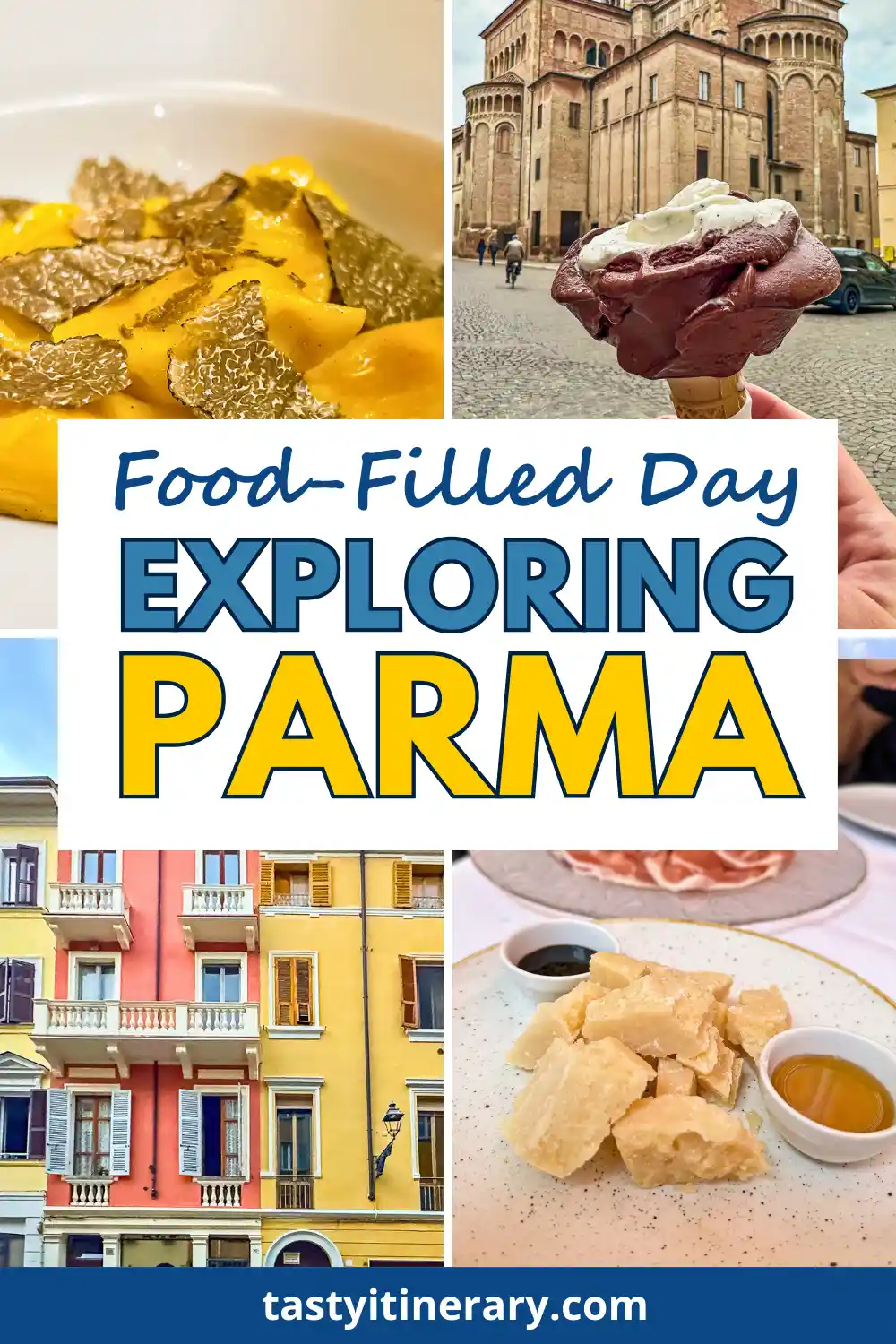
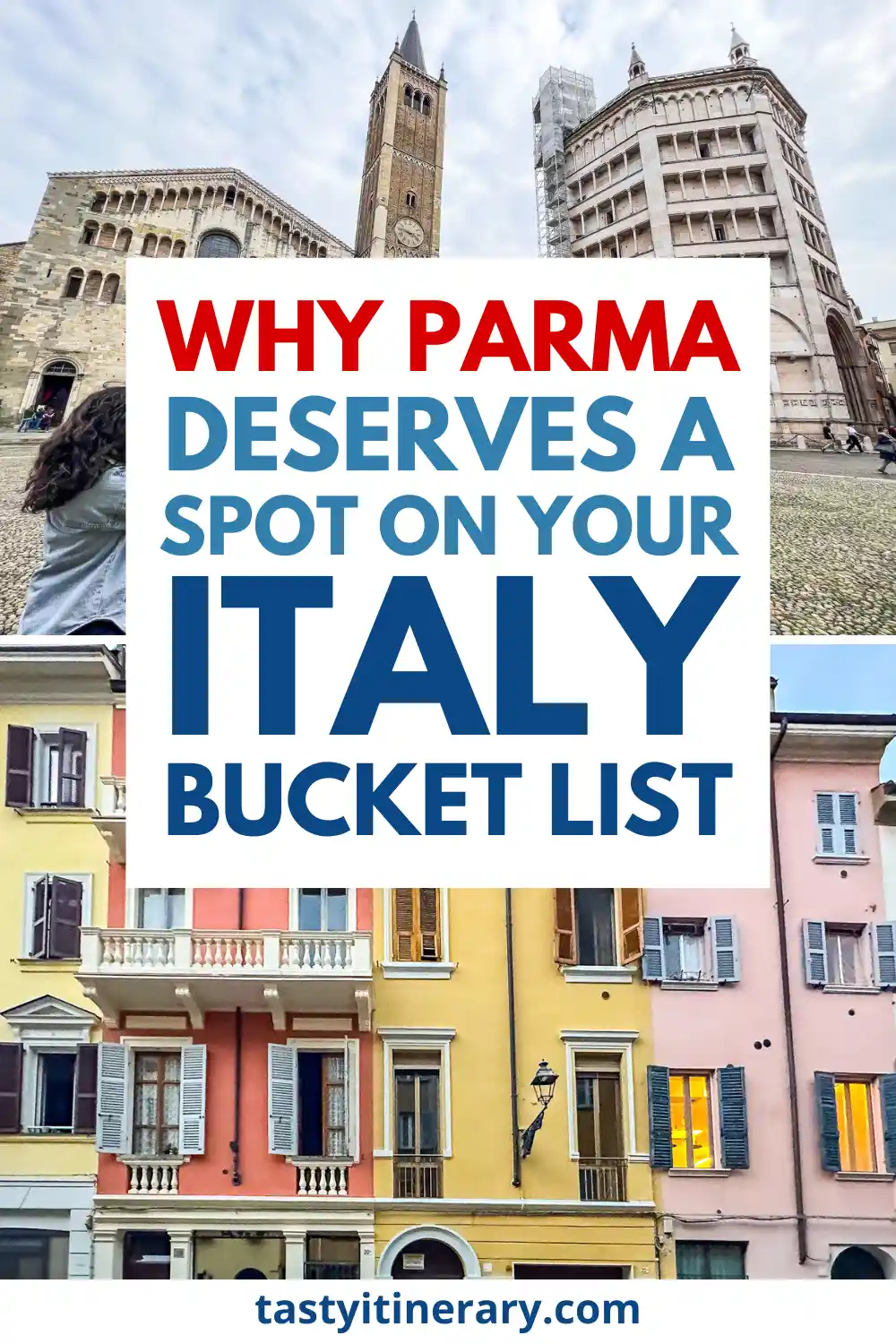
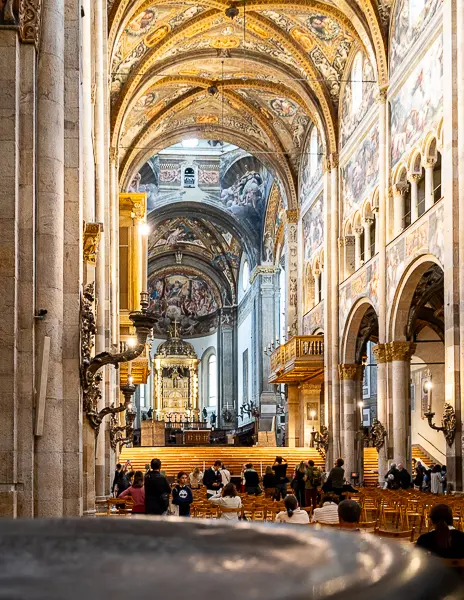
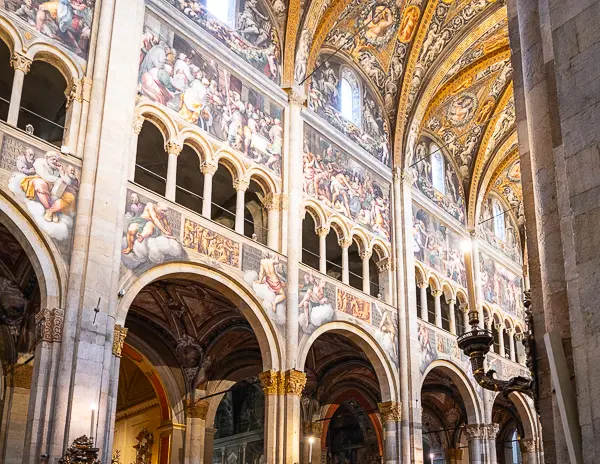
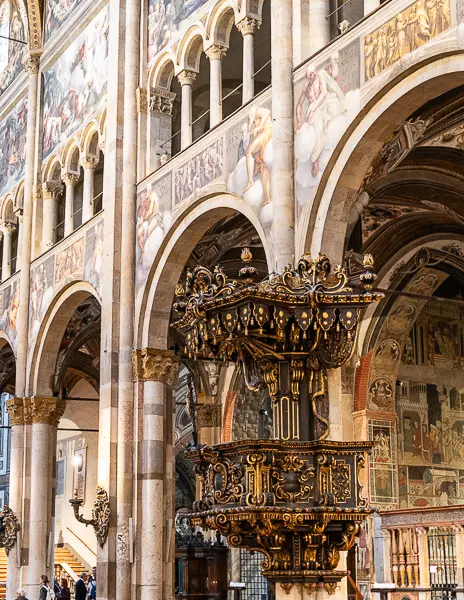
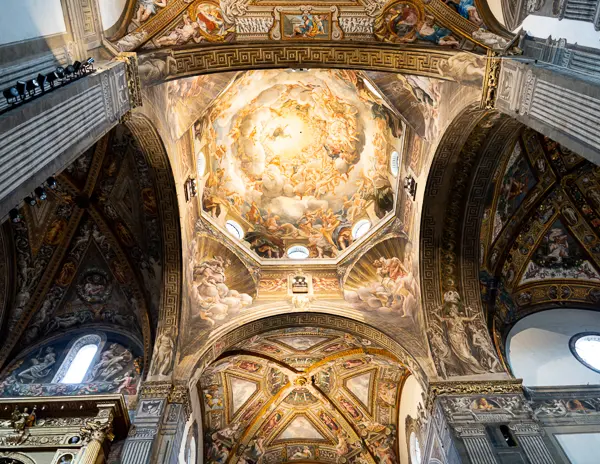
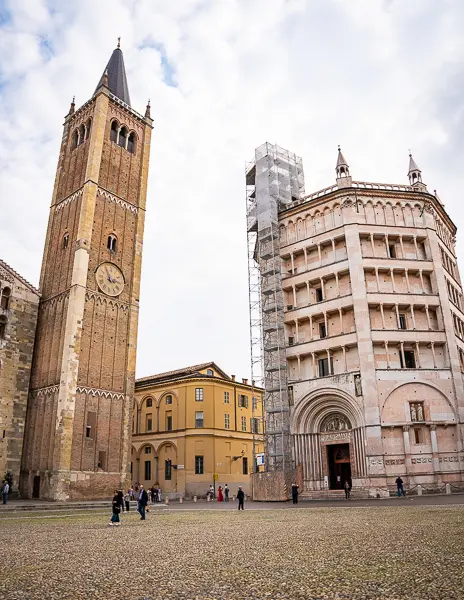
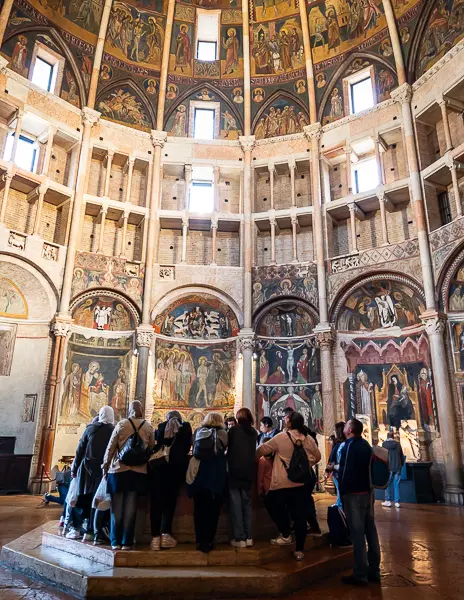
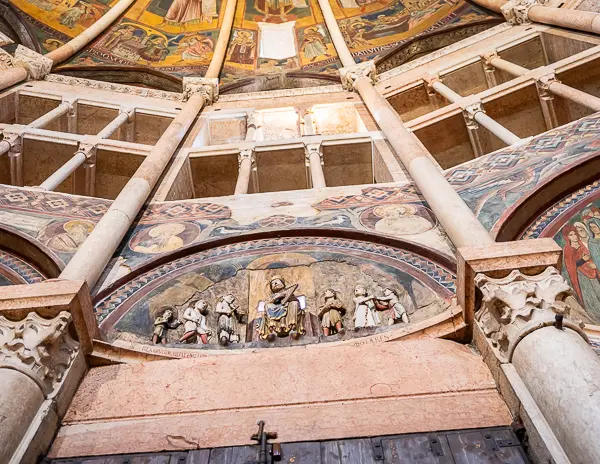
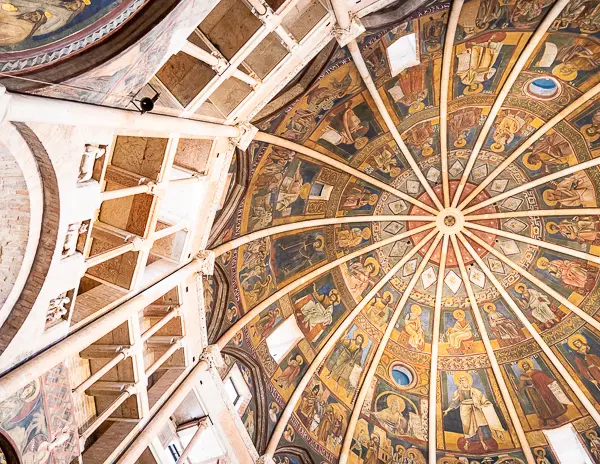
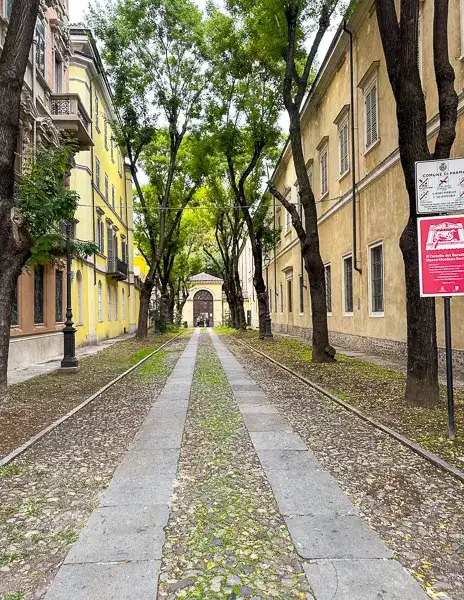
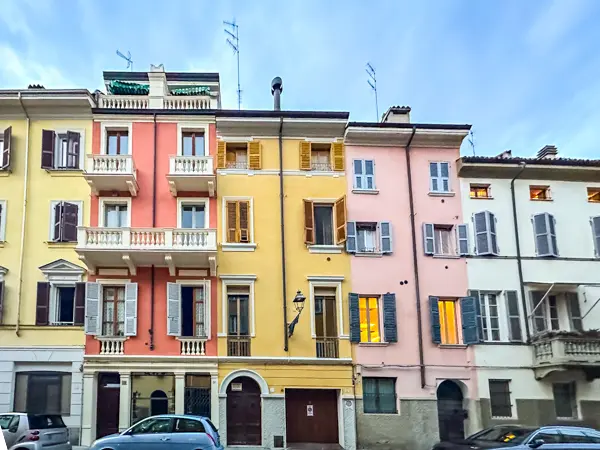
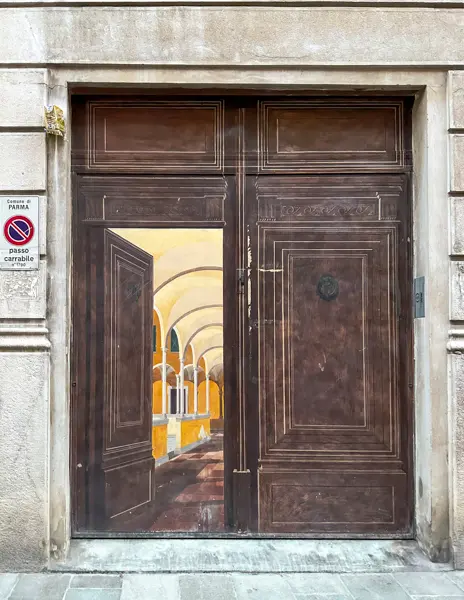
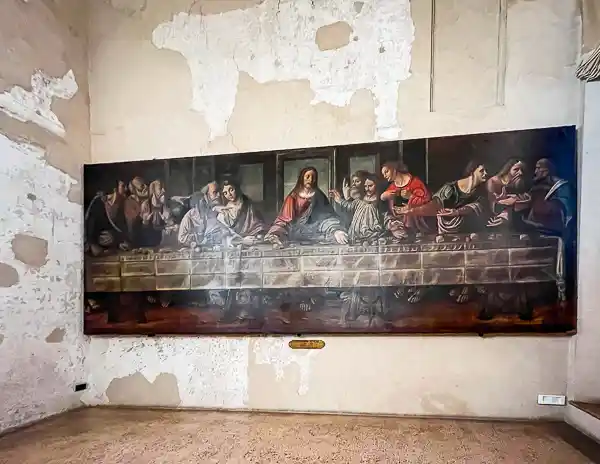
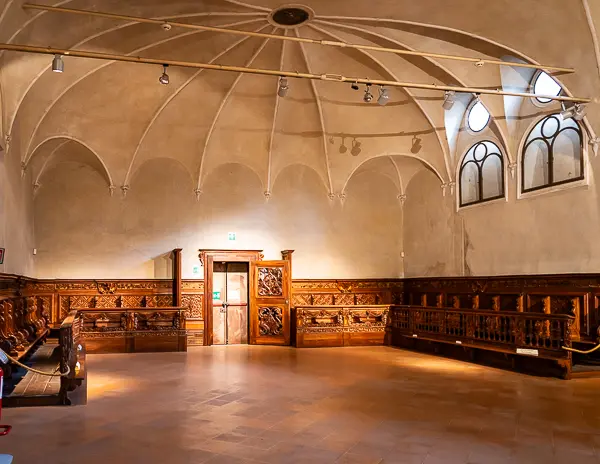
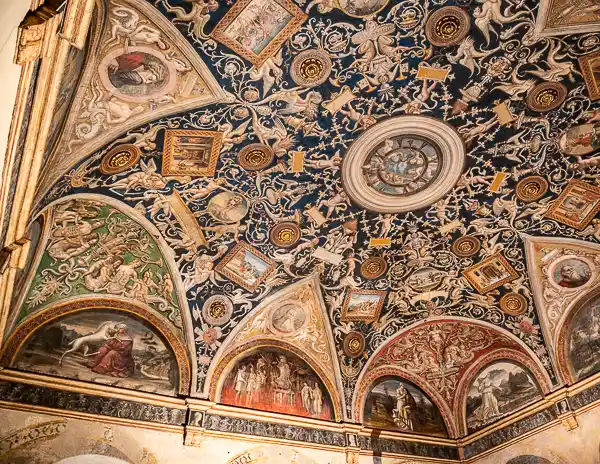
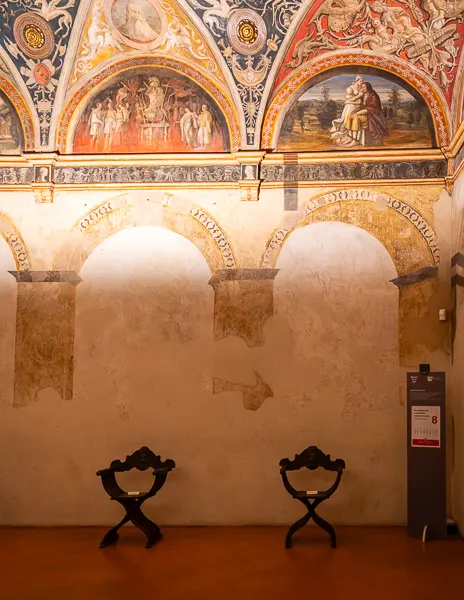
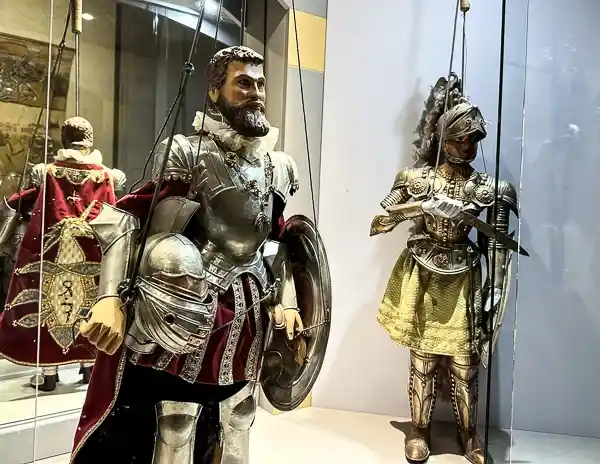
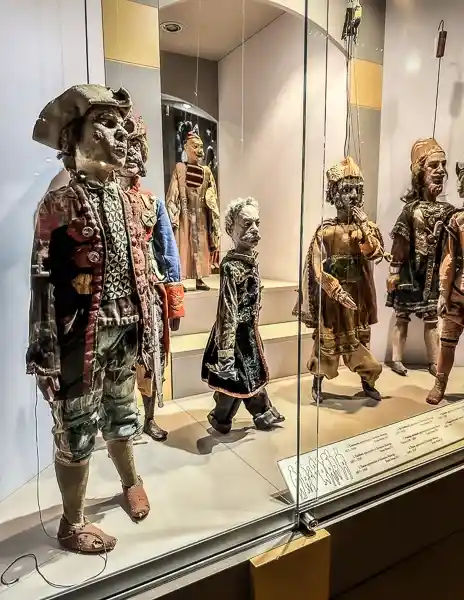
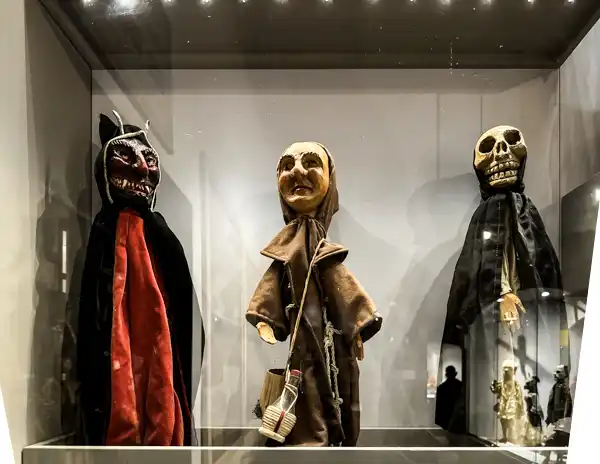
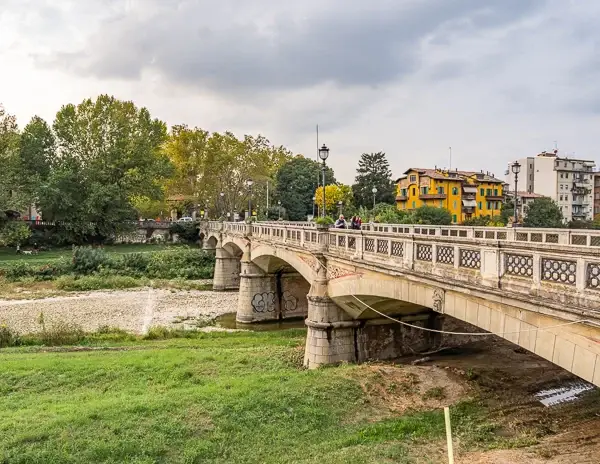
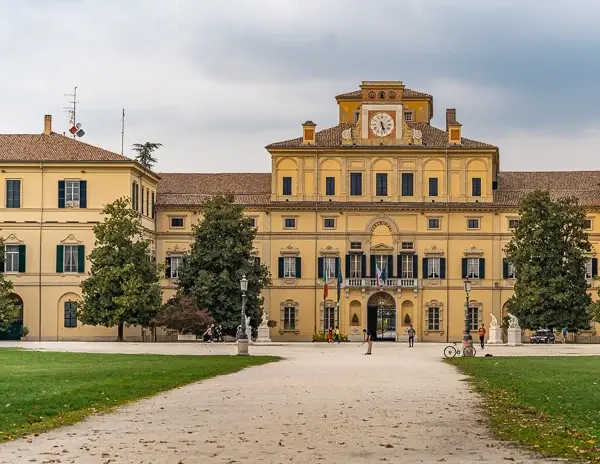
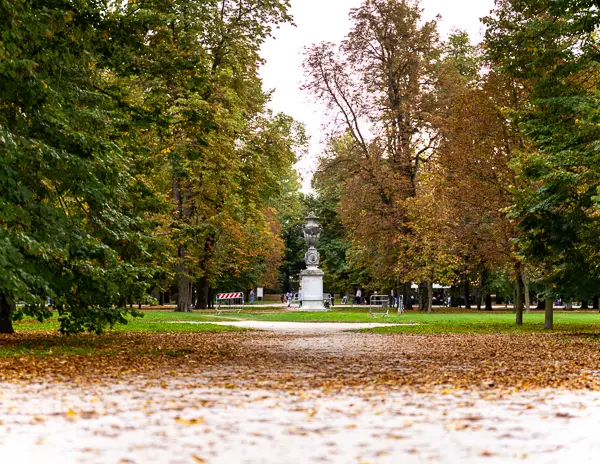
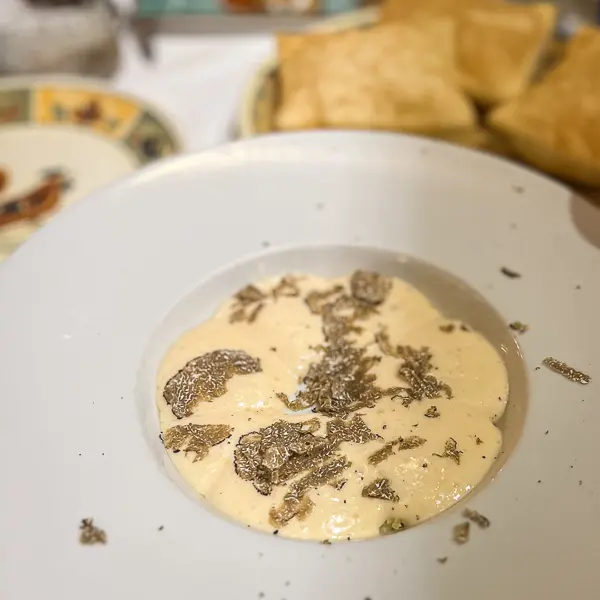
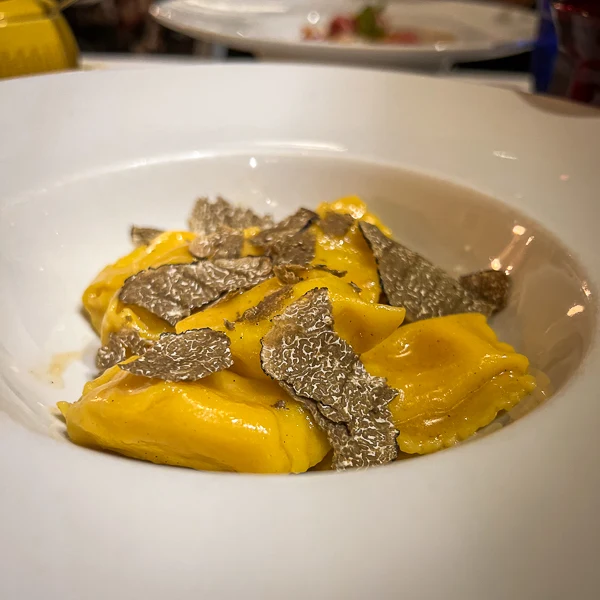
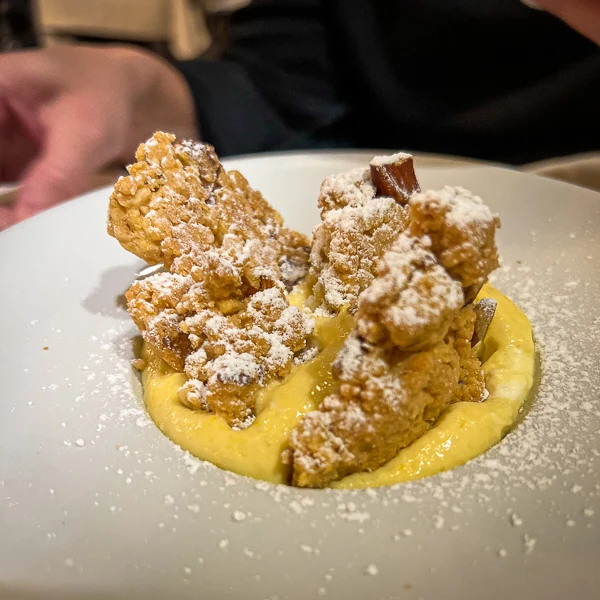
What a brilliant review – I literally followed this review nearly to the letter. Gallo d’Oro was OUTSTANDING! Thank you for all the recommendations. Beautiful city.
Helen – Your comment made my day! This makes my heart happy knowing you had a wonderful trip.